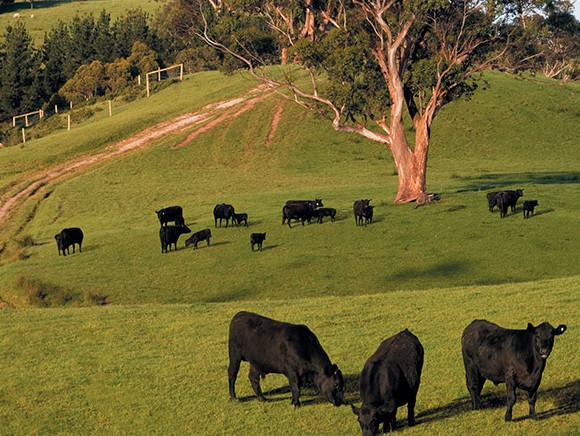
Animal welfare, sustainability, food safety – all these topics are playing an increasingly important role in meat-buying decisions. And yet even these aspects are not enough for today’s demanding consumers, who also want perfect taste, tenderness and texture. These characteristics can be found in the premium Australian grain-fed beef brand ‘1788’.
The story of this Australian beef dates back to 1788, the year in which Captain Arthur Philip first set foot on land in New South Wales, on Australia’s eastern coast. He had taken six cows and a bull with him on his journey. Did he somehow have an inkling that the newly discovered country would offer the optimum conditions for cattle farming?
Five years ago, Jan Zandbergen World-Wide Quality in Meat, based in Veenendaal, began to import refrigerated grain-fed beef, which it marketed under the ‘1788’ brand. It became an immediate success. The meat comes from cattle of the Hereford and Angus breeds. The animals first spend 26 months grazing on long, juicy grass on the wide and unspoilt green expanses of Australia’s east coast. In combination with the mild climate, there is a surplus of natural food sources. The cattle are then moved into a spacious feed lot where they are fed a special grain mix for 120 days, or in the case of 1788 Platinum, the very top class of Black Angus beef, for 200 days. Commercial Director Arnold Burger: “The grain gives the meat a nice marbled texture and it also results in a tremendous flavour boost.”
 Tasting opportunity
Tasting opportunityAt the OSV Winter Barbecue in January 2016 the participants could taste various cuts from Jan Zandbergen’s ‘1788’ line to their heart’s content. The 170 attendees were unanimous in their feedback: ‘This meat simply melts on the tongue’ and ‘Meat full of character with a beautiful texture’ were just a couple of the compliments heard during the event.
And that flavour hasn’t gone unnoticed; it has even impressed some of the finest connoisseurs in the world. In the autumn of 2015 the steak from the 1788 Platinum line won a gold medal in the World Steak Challenge held in the UK – a competition in which an international panel of experts judged no less than 72 steaks from all over the world. Only 11 of them received a gold medal. “For us, this confirms our quality,’’ says Arnold Burger.
The animals are slaughtered and processed into cuts in Australia. The company praises how well the Australian meat-processing system is organised, “and the traceability is good too,” says Burger. “All the animals are chipped. After slaughtering, each cut can be traced back to the particular farm the animal came from via a barcode.” The transit time from Australia to Europe is six weeks, which gives the meat sufficient time to mature. “This enables us to guarantee tenderness,” adds Arnold Burger. “Despite the time needed for shipping, fresh Australian beef still offers a long shelf life combined with a consistently high quality.”
After checks by the Netherlands Food and Consumer Product Safety Authority (NVWA), the meat is transported to Jan Zandbergen in Veenendaal, where the sales and distribution activities are handled. The challenge for the international sales team is to supply the customer base with 17 different cuts. “They do a really good job,” comments Burger. “It’s interesting to see that each country has its own preferences. The rump is popular in Portugal, for example, and rib-eye in Sweden. One of our subsidiaries also portions the meat and processes it into steaks. Needless to say, we don’t throw anything away,” he emphasises.
The tender, marbled and well-matured meat offers plenty of opportunities for foodservice companies, specialised butchers and food retailers alike. Two years ago the meat processing company also introduced a hamburger line featuring Angus, Wagyu, Iberico and lamb burgers. “This line enables us to capitalise on the hamburger hype,” says Arnold Burger. “The 1788 off-cuts form the basis for the Angus burgers, which are premium beef burgers in 150 and 200 gram versions. They are in high demand across the whole of Europe.’’ In other words, there’s lots going on at Jan Zandbergen: “We’ve also got grain-fed beef from the USA and from Uruguay, and the 1788 brand still holds plenty of growth potential,” states Arnold Burger. “We’ve got lots more plans and ideas. And we’re gaining new fans all the time.’’
Source: © 1788 Beef